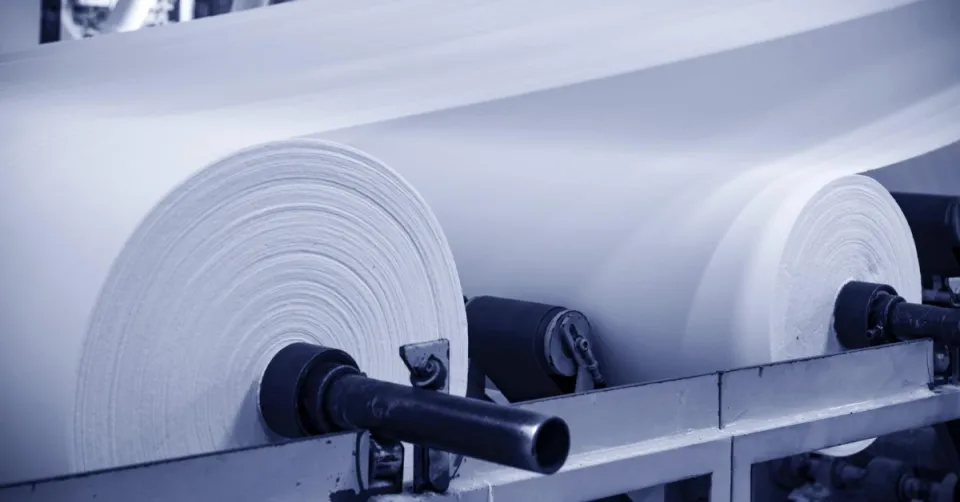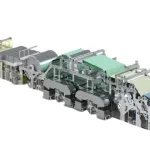China’s decision to implement new requirements on the import of ‘dry pulp’ is causing “big challenges” for processors in Thailand, the BIR World Recycling Convention in Bangkok heard.
Speaking at the Paper Division meeting on 28 October, Jun Park, Recovered Paper Trader at VIPA Lausanne SA (CHE), said the new rules, which came into play in early October, “created a lot of uncertainties in the market, resulting in the market price to crash”.
China’s new requirements for imported recycled pulp are aimed at tackling contamination. Materials with 0.5% or more impurities will be rejected. Implementation of the new rules has led to 100% inspections taking place, which is causing delays at ports. “People believe there are about 3,000 to 4,000 containers stuck in port in China,” said Mr Park.
China imports around 4-5 million tonnes of dry pulp a year – and Thailand is a major supplier of this. Dry pulp processors are a relatively new part of the recovered paper market. They sprung up after China’s ‘National Sword’ ban on the import of wastepaper eight years ago. Processors started operating in Thailand and Malaysia, creating a dry pulp product that could be imported into China.
Mr Park reasoned that China was now effectively putting in place the parameters of what was acceptable, as dry pulp was introduced to the market with no defined standard. “It was a fine line between waste and paper,” he said.
While the new requirements cover imported recycled pulp, Mr Park clarified that the focus from China is on dry pulp rather than ‘wet pulp’ – and the “real target” was the 2-3 million tonnes a year of dry pulp from Thailand. “They have no issues for [wet pulp] to be imported to China, although they do go through 100% inspection as well,” Mr Park said.
As a result of the new rules, the market is expected to be volatile for the next two to three months, with pressure on the supply side from the US as well as Europe. After India, Malaysia and Thailand are the top export destinations for recovered paper from the US. Paper Division President Francisco Donoso of DOLAF SERVICIOS VERDES, S.L. (ESP), remarked that China’s new rules had “surprised all of us” and questioned how it would impact trading volumes and flows.
Mr Park believed that dry pulp imports to China for this year are expected to fall below four million tonnes. He added: “I think there will probably be a move to cleaner OCC, which I think in the short-term would definitely impact volumes to Thailand in particular.” He thought some smaller players in Thailand could disappear from the market.
The feeling is that China is unlikely to ban recycled pulp. It has been guiding suppliers “to follow certain standards” and there is an expectation that inspection levels will reduce over time to 50%, then 30% “and maybe zero at some point”, Mr Park added.
Overall, the new rules are expected to shift the market towards higher-quality suppliers, more diversity of supply, greater quality control, and more investment in AI sorting at the supplier end, such as in the US and Europe.
Exports from Europe to Asia
Simone Scaramuzzi, Sales and Purchasing director at LCI (ITA), gave a presentation on the challenges for recovered paper exports from Europe to Asia.
Europe has increased its production capacity, reducing the availability of recovered paper, making Europe more competitive compared to Asian mills. Tighter controls on EU waste exports and increased documentation requirements, as well as fluctuating shipping prices and service, were also limiting exports, as suppliers preferred the domestic market to avoid issues.
2025 has seen a moderate price rebound, driven by stronger demand from local mills for high-quality recovered fibre like OCC and sorted office paper. The market was alternating, with periods of high exports to Asia balanced by periods of strong European demand linked to energy costs and shipping/transport costs.
Growth of India
Ranjit Baxi, CEO of J&H Sales International (GBR), gave an overview of India, the “fastest growing paper market” with a compound annual growth rate of over 7.5%. This is fuelled by rising literacy rates, an increasing middle class and growth in sectors including healthcare, hospitality and e-commerce. Indian industry wants the government invest in domestic collections but a domestic supply is not expected to kick in for another 5-7 years, meaning imports will remain the primary feedstock in the interim.
Mr Baxi said: “The basic rate of customs duty on imported paper is 2.5% in India… 60% is imported. So the Indian industry is constantly lobbying to the government to bring the import duty down to 0% because of its critical dependence on [paper] import.”
Paper exports have also surged in India, and “more and more developing countries are looking to India as a fibre supply, as a finished paper source,” Mr Baxi said.
US exports
Brian Reese, Sales Manager, Canusa Hershman Recycling (USA), covered pressing challenges facing the American OCC trade to Southeast Asia.
US paper and cardboard recycling rates have fallen, while US mills are consuming more recovered fibre, and are converting to accept more recovered grades. In addition, new containerboard mills are coming online and pulling more OCC domestically. “In short, less OCC is being generated overall and more of what’s produced stays in the US,” he said.
Demand from Southeast Asia has also declined and there is overcapacity in Asian mills, particularly China. “Many suppliers find it easier to sell to domestic mills rather than deal with container load and bookings and inspections”. Continued trade tensions and tariff uncertainty were also deterring exports.
Mr Reese described the market as being in “a difficult phase” but he was hopeful that the “next cycle could be very rewarding”.
Global Auction for Recovered Paper for Recycling
Mr Donoso concluded the session with an introduction to GARP – the Global Auction for Recovered Paper for Recycling, a new platform set to launch in December 2025. GARP will host weekly 30-minute auctions for recovered paper and cardboard, featuring live pricing, anonymous identities and integrated standards. Representing a significant shift from traditional trading methods, the platform will connect hundreds of suppliers, customers and brokers from every corner of the world, regardless of company size.




